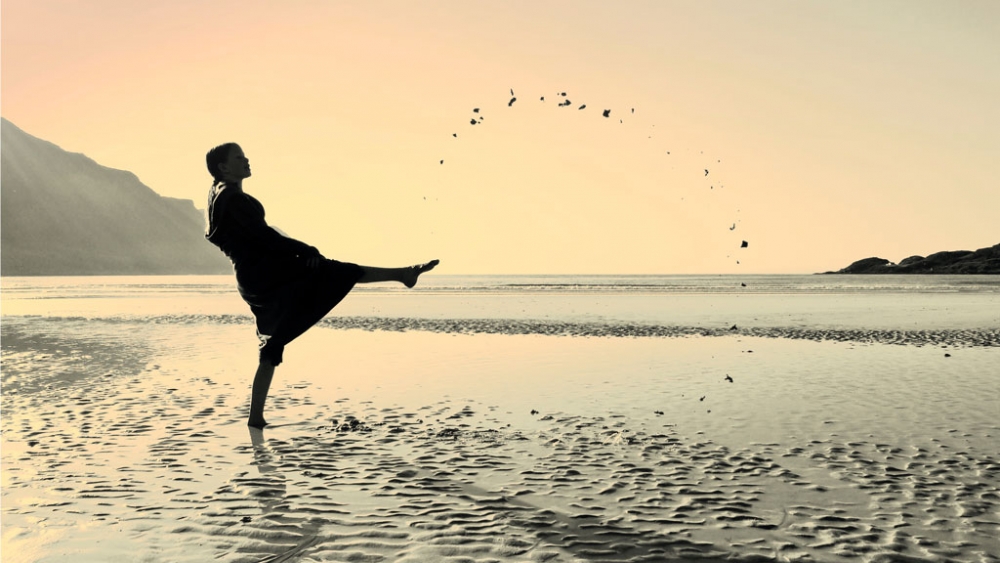by Dawn Meredith-Davies
Tension and energy
Tension in muscles is unreleased energy. We talk about ‘holding’ our tension here or there, or wherever. We haven’t let it go. Energy wants to be in motion, not stored. Energy in motion – emotion – is what wants releasing. This may seem like a quantum leap, but e-motions are e-nergy in motion.
The tension in muscles is unreleased energy, and energy wants to be in motion, not stored. Energy in motion – emotion – is what wants releasing. This may seem like a quantum leap, but e-motions are e-nergy in motion.
Our emotions are supposed to flow. They’re supposed to flow with movement and to be released. This is why good long, hearty walk will blow away the cobwebs…and we always feel better afterwards. Perhaps you run for ‘stress relief’? Do you pull on your trainers in an almighty bad-mood, and come home a different person? Perhaps calmer, humble, sorry, reconnected to yourself, issues resolved, happier and generally just easier and more in flow with yourself? If this was the upshot of the run, how did you get there? Did you rant and rave in your head, did you run hard, hard, hard to use up some of that otherwise unspent energy? Were you overcome with tears, so frustrated that you let them pour? Did you run for miles and not even register the distance, so absorbed with ‘mulling over that issue’?
Movement…and ducks!
Movement changes things. It changes our emotional state because energy is in motion. Emotion is shifting. The tension we hold in our muscles is unreleased emotion. And generally, we don’t seem very good at letting go of it…unlike, for example, ducks!
The tension we hold in our muscles is unreleased emotion, and generally we don’t seem to be very good at letting go of it…unlike, for example, ducks!
Check out the ducks on the duck pond the next time they are having a little fracas….they’ll flap and squawk, they’ll rise up out of the water paddling their feet in a webbed fury and then as quickly as the furore flared up it will be over! They’ll both turn their backs, shake out their tail feathers and gracefully paddle away. Here’s the important part: they shake out their tail feathers. They literally release any held energy in their system, so that when it’s done and dusted they’re free to go merrily on their way, not holding onto any residual energy from the incident. They do this, frankly, because it’s not helpful to hold on to it… but granted we’re not quite the same as ducks.
Learning how to let it go
Our own emotional interactions don’t always go quite so smoothly, and what we’re less good at doing is releasing the emotional energy from the interaction. This usually goes hand in hand with churning it over and over in our minds; who said what to whom and quite how incensed we are about it…or something along these lines! So we end up storing it and invariably carrying it with us, sometimes for days, weeks or even years.
Hold this tension for long enough – hold this pattern repeatedly over and again – and this becomes the norm, the default setting for our tissues. And as we talked about previously, it’s the tension in tissues which causes the forces of movement to be overloaded and eventually result in injury. However, with awareness, we have the capacity to shift this tension as we go along so that it doesn’t lead to an overwrought breakdown. If you find yourself in this position, where you’re actively holding on to tension, what you’ll find you really need to do is breathe…
The breath
….Because the breath will allow the tension to shift. Where there’s tension, the breath isn’t flowing. Breathe into the tension and it will let go of its grip. It will allow the held energy to be released. It will allow the tissues to lengthen and to soften.
Breathe into the tension and it will let go of its grip. It will allow the held energy to be released. It will allow the tissues to lengthen and to soften.
There’s a reason why your yoga teacher gets you to inhale at certain times and exhale at others. When we’re inhaling we’re assisting the body in its movement. Fill your lungs and space in your abdomen gets smaller…and with a small space comes an increased ‘intra-abdominal pressure’. This is helpful – it’s not ‘holding your breath’ to lock down your six pack (!) – it’s allowing the inhalation to enhance the support of the trunk, to allow flowing movement, through this increased internal pressure.
At times of exhaling, we’re letting go of anything we don’t need – be that all of those waste products of exhalation or any unnecessarily stored energy. A mini re-boot to rest, because we can’t be continually ‘on’ it.
We have to breathe out to create space for the next move – literally and metaphorically. Accessing and focussing the breath will allow us to vanquish the tension in our tissues. We may learn to control our breath in our yoga class, but the real control comes when we’re living our everyday lives. The breath is our lifeline. It will also give us movement, allow our muscles to relax, and on so many levels the breath will give us healing.
Read more from Dawn!
- Posture, alignment and recovering from injury
- Meridians, anatomy trains and music
- Letting go of emotion
- All of our yesterdays and the beauty of yoga

